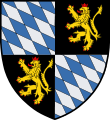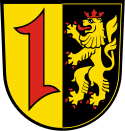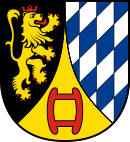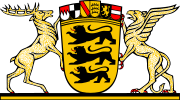
The Electoral Palatinate or the Palatinate, officially the Electorate of the Palatinate, was a state that was part of the Holy Roman Empire. The electorate had its origins under the rulership of the Counts Palatine of Lotharingia from 915; it was then restructured under the Counts Palatine of the Rhine in 1085. These counts palatine of the Rhine would serve as prince-electors from "time immemorial", and were noted as such in a papal letter of 1261; they were confirmed as electors by the Golden Bull of 1356.

The House of Wittelsbach is a former German dynasty, with branches that have ruled over territories including the Electorate of Bavaria, the Electoral Palatinate, the Electorate of Cologne, Holland, Zeeland, Sweden, Denmark, Norway, Hungary, Bohemia, and Greece. Their ancestral lands of Bavaria and the Palatinate were prince-electorates, and the family had three of its members elected emperors and kings of the Holy Roman Empire. They ruled over the Kingdom of Bavaria which was created in 1805 and continued to exist until 1918.

The Palatinate, or the Rhenish Palatinate (Rheinpfalz), is a historical region of Germany. Prior to World War II, it was also referred to as Rhenish Bavaria; as a state of the Holy Roman Empire, it was known as the Lower Palatinate (Unterpfalz), which designated only the western part of the Electorate of the Palatinate, as opposed to the Upper Palatinate (Oberpfalz). It occupies roughly the southernmost quarter of the German federal state of Rhineland-Palatinate (Rheinland-Pfalz), covering an area of 2,105 square miles (5,450 km2) with about 1.4 million inhabitants. Its residents are known as Palatines (Pfälzer).

Baden-Württemberg, commonly shortened to BW or BaWü, is a German state in Southwest Germany, east of the Rhine, which forms the southern part of Germany's western border with France. With more than 11.07 million inhabitants as of 2019 across a total area of nearly 35,752 km2 (13,804 sq mi), it is the third-largest German state by both area and population. As a federated state, Baden-Württemberg is a partly-sovereign parliamentary republic. The largest city in Baden-Württemberg is the state capital of Stuttgart, followed by Mannheim and Karlsruhe. Other major cities are Freiburg im Breisgau, Heidelberg, Heilbronn, Pforzheim, Reutlingen, Tübingen, and Ulm.

Schwetzingen is a German town in northwest Baden-Württemberg, around 10 km (6.2 mi) southwest of Heidelberg and 15 km (9.3 mi) southeast of Mannheim. Schwetzingen is one of the five biggest cities of the Rhein-Neckar-Kreis district and a medium-sized centre between Heidelberg and Mannheim.
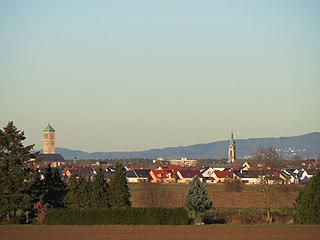
Hockenheim is a town in northwest Baden-Württemberg, Germany, about 20 km south of Mannheim and 10 km west of Walldorf. It is located in the Upper Rhine valley on the tourist theme routes "Baden Asparagus Route" and Bertha Benz Memorial Route. The town is widely known for its Hockenheimring, a motor racing course, which has hosted over 30 Formula One German Grand Prix races since 1970.
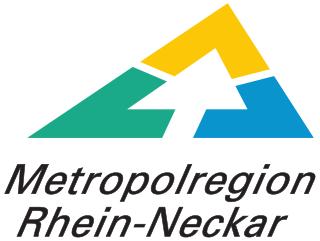
The Rhine-Neckar Metropolitan Region, often referred to as Rhein-Neckar-Triangle, is a polycentric metropolitan region located in south western Germany, between the Frankfurt/Rhine-Main region to the North and the Stuttgart Region to the South-East.

Wachenheim an der Weinstraße is a small town in the Bad Dürkheim district in Rhineland-Palatinate, Germany, roughly 1 km south of Bad Dürkheim and 20 km west of Ludwigshafen. It is known above all else for its various businesses in the field of winegrowing, and in particular for Sekt.
Otto II, called the Illustrious, was the Duke of Bavaria from 1231 and Count Palatine of the Rhine from 1214. He was the son of Louis I and Ludmilla of Bohemia and a member of the Wittelsbach dynasty.

Eppelheim is a city in northern Baden-Württemberg bordering Heidelberg. It belongs to the district Rhein-Neckar-Kreis.

The coat of arms of the German state of Baden-Württemberg features a greater and a lesser version.

Angelbachtal is a municipality in Kraichgau, between Sinsheim and Bruchsal, created in 1972 by the union of Eichtersheim and Michelfeld. The name Angelbachtal comes from the valley of the Waldangelbach, which flows through Kraichgau.

Mannheim Palace is a large Baroque palace in Mannheim, Baden-Württemberg, Germany. It was originally the main residence of the Prince-electors of the Electorate of the Palatinate of the House of Wittelsbach until 1777. Part of the palace is used today by the University of Mannheim. The castle, which features tapestries, furniture, paintings, porcelain and silverware can be visited on a free-flow basis with audioguides.

Ladenburg is a town in northwestern Baden-Württemberg, Germany. It lies on the right bank of the river Neckar, 10 km (6 mi) northwest of Heidelberg and 10 km (6 mi) east of Mannheim.
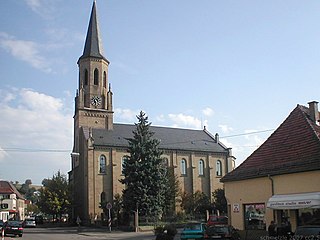
Meckesheim is a village in south western Germany. It is located between Heidelberg and Sinsheim in the Rhein-Neckar district in the state of Baden-Württemberg.

The Rhine-Neckar S-Bahn(S-Bahn RheinNeckar) forms the backbone of the urban rail transport network of the Rhine Neckar Area, including the cities of Mannheim, Heidelberg and Ludwigshafen.

The Western Railway (Westbahn) in Württemberg was opened in 1853 and ran from Bietigheim-Bissingen to Bruchsal. It was the first railway link between the states of Württemberg and Baden in Germany and one of the oldest lines in Germany.

The Mannheim–Karlsruhe–Basel railway is a double-track electrified mainline railway in the German state of Baden-Württemberg. It runs from Mannheim via Heidelberg, Bruchsal, Karlsruhe, Rastatt, Baden-Baden, Offenburg and Freiburg to Basel, Switzerland. It is also known as the Rhine Valley Railway or the Upper Rhine Railway (Oberrheinbahn).

Wiesloch-Walldorf station is in the towns of Wiesloch and Walldorf in the German state of Baden-Württemberg. The station is classified by Deutsche Bahn as a category 3 station. Leimbach Park and the Wiesloch Feldbahn and Industrial Museum are located to the north of the station, with the headquarters of Heidelberger Druckmaschinen and SAP SE on the south-western side.
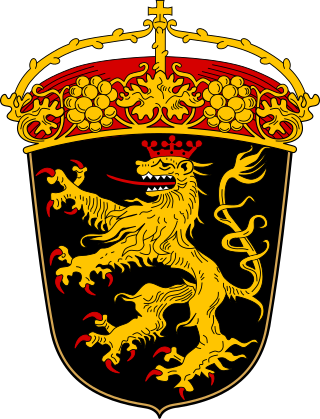
The Palatine Lion, less commonly the Palatinate Lion, is an heraldic charge. It was originally part of the family coat of arms of the House of Wittelsbach and is found today on many coats of arms of municipalities, counties and regions in South Germany and the Austrian Innviertel.
